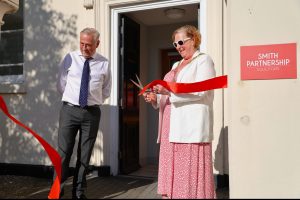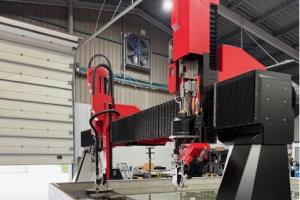Sales and exports highest for 18 months says Greater Birmingham chamber

DOMESTIC sales and exports by firms in the Greater Birmingham area have increased to levels not seen for more than 18 months, a new survey has found.
According to figures from the latest quarterly economic survey by Greater Birmingham Chambers of Commerce (GBCC), half of the businesses surveyed increased sales and orders over the past three months.
However, the organisation has tempered expectations by saying the results were from a mid-summer low point.
The GBCC quarterly economic survey, supported by recruitment and people development agency Katie Bard, showed that manufacturers increased home market sales to 50%, a rise of 10% on the previous quarter. Orders were also buoyant with 52% of respondents reporting an increase, up from 37% in the previous quarter.
Manufacturers increasing export sales rose from 35% to 50% and those increasing orders were also up to 50% from 36% in the previous three month period.
The chamber said the figures were supported by an increasing number of manufacturers taking on more personnel, with 44% of respondents growing headcount during the period. A further 43% said they expected to do so in the next three months.
Nevertheless, skills continued to be an issue with three quarters of respondents complaining they were having difficulties recruiting the right people.
Paul Faulkner, chief executive of the GBCC, said: “Sales figures are extremely encouraging but we must retain a sense of proportion because we are starting from the low levels we experienced in the middle of the downturn.
“The fact that we are creating more jobs shows that confidence is slowly returning to business and reflects improving employment figures across the region. Our own experience through the Chamber Skills Hub we created 12 months ago is that there are many young people with the skills to make a positive entry into the workplace using vocational learning.
“More and more employers are finding that as their workforce ages, there is a real requirement to address a succession plan. And it’s incumbent on employers to understand their training needs and how they can start to address them.”
On the employment front, John Mortimer, co-founder and chief executive of the Angela Mortimer group and Katie Bard, said: “Although volumes of orders are not significantly increased, there is a greater sense of determination, and competitiveness in office recruitment.”
The number of manufacturers confident that turnover would improve in the next 12 months was down from 66% to 64%. However, 71% – up from 54% in the last quarter – said they expected profitability to improve.
Service industries reporting increased UK sales were up slightly – 45% against 40%, while orders in the home market reached 34% against 32%.
Export figures were also static with firms increasing sales and orders in both fields up by only 2% to 27%.
A third of firms (33%) increased their workforces in the service sector during the last three months and 44% predicted they would increase theirs over the next three months.
But, like manufacturers, the service sector was struggling to find the right personnel with 70% experiencing difficulties in recruitment.
Confidence figures have remained constant this year with 61% anticipating an improvement in turnover in the next 12 months and 57% expecting profitability to rise. Almost three quarters (71%) said they were working below full capacity.
Elsewhere, the CBI has said the rate of economic expansion dipped slightly in the three months to September following a near record-breaking previous month.
Nevertheless, its Growth Indicator suggested growth was still strong.
Its survey of 775 respondents across the manufacturing, retail and service sectors showed the pace of growth slowed down but remained firm, with a balance of +22% in September, compared with +31% in August and a long-run average of +4%.
The business & professional services and retail sectors continued to show robust growth, but manufacturing stalled in the quarter to September, for the first time in almost two and a half years.









